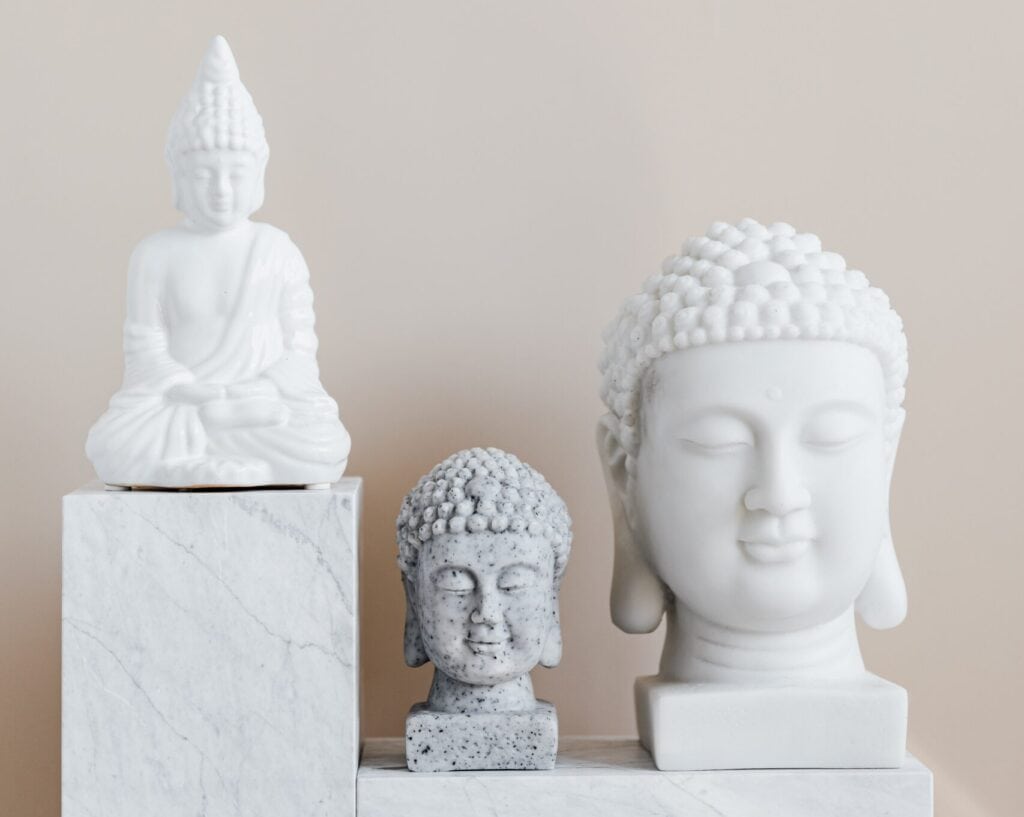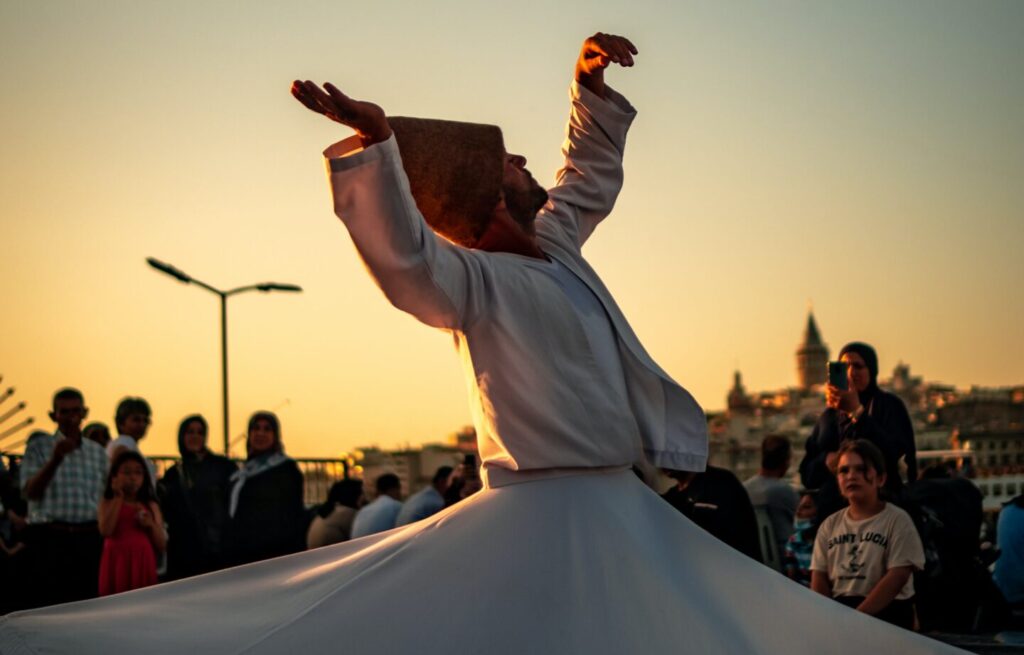Origins of Mindfulness
In the intricate tapestry of human culture and spirituality, mindfulness meditation emerges as a thread woven through countless traditions and epochs. This profound practice, centred on cultivating deep, non-judgmental awareness or presence, is not a modern invention but a legacy handed down through ages and across continents. In our exploration of the origins of mindfulness meditation, we unearth its multifaceted roots, tracing its journey from ancient rituals to contemporary therapeutic practices. This rich heritage underscores how mindfulness, transcending cultural and religious lines, has been a universal pursuit for deeper understanding, inner peace, and connection with the world around us.
Mindfulness in Buddhism
The most well-known origin of mindfulness meditation lies in Buddhism. The Buddha, born as Siddhartha Gautama, emphasised the importance of mindfulness (Sati in Pali) in his teachings. Central to the Noble Eightfold Path, mindfulness in Buddhism involves observing bodily sensations, thoughts, and emotions non-judgmentally. This practice has significantly influenced modern mindfulness, particularly in the development of techniques like body scan and mindful breathing, which are now core elements in various mindfulness-based therapies.

Contributions of Buddhism to Modern Mindfulness:
- Foundation of Mindfulness Principles: Buddhism introduced the core principles of mindfulness, such as awareness of the present moment, non-judgmental observation, and the understanding of impermanence.
- Development of Specific Techniques: Practices like mindful breathing and body scans, pivotal in modern mindfulness therapies, originated from Buddhist meditation techniques.
- Insight into Mind-Body Connection: Buddhism’s emphasis on the interconnectedness of mind and body laid the groundwork for mindfulness approaches that integrate physical and mental health.
Buddhist Sources for Further Reading:
- Foundation of Mindfulness Principles: Explore the Buddhist concept of mindfulness in “Mindfulness in Plain English” by Bhante Henepola Gunaratana. Read more.
- Development of Specific Techniques: The Buddhist origins of mindfulness techniques like body scans are discussed in “The Body Scan Practice” by Jon Kabat-Zinn. Read more.
- Insight into Mind-Body Connection: “The Heart of Buddhist Meditation” by Nyanaponika Thera delves into the Buddhist understanding of the mind-body connection. Read more.
Mindfulness in Hinduism
The origins of mindfulness meditation practices in Hinduism predate Buddhism. The Upanishads focus on self-awareness and inner contemplation. Patanjali’s Yoga Sutras emphasise Dhyana (meditation), involving deep mental concentration. These practices have contributed to modern mindfulness, especially in aspects like focusing attention and cultivating a non-attached awareness, which are integral to mindfulness-based stress reduction (MBSR) techniques.

Contributions of Hinduism to Modern Mindfulness:
- Focus on Self-awareness: Hindu practices, particularly in the Upanishads and Yoga, emphasise self-awareness and inner contemplation, foundational to modern mindfulness.
- Concept of Dhyana (Meditation): The practice of Dhyana in Yoga, involving deep concentration and mental discipline, has significantly influenced mindfulness meditation techniques.
- Holistic Approach to Well-being: Hinduism’s approach to wellness, which integrates mind, body, and spirit, has shaped contemporary mindfulness practices aimed at holistic health.
Hindu Sources for Further Reading:
- Concept of Dhyana (Meditation): Deepen your understanding of Dhyana in Patanjali’s Yoga Sutras. Here is a fantastic translation written by none other than my brother Dr. Mario Kozah.
- Focus on Self-awareness: The Upanishads provide insight into Hindu teachings on self-awareness. Learn more.
- Holistic Approach to Well-being: “The Principal Upanishads” by Sarvepalli Radhakrishnan explores the holistic wellness approach in Hinduism. Read more.
Mindfulness in Christianity
Christian contemplative practices, similar to mindfulness, aim for presence and deep awareness of God. Practises like Lectio Divina and Centering Prayer have paralleled modern mindfulness practices in fostering introspection and inner silence. These methods have informed mindfulness approaches in the West, blending traditional meditative practices with contemporary therapeutic approaches.

Contributions of Christianity to Modern Mindfulness:
- Contemplative Prayer Techniques: Practices like Lectio Divina and Centering Prayer focus on presence and awareness, paralleling mindfulness techniques in fostering a deep, introspective focus.
- Integration of Mindfulness with Spiritual Life: Christian contemplative traditions have shown how mindfulness can enhance spiritual understanding, influencing how the practise is adapted to therapeutic approaches such as Posttraumatic Growth, which features ‘spirituality’ as a cornerstone.
- Emphasis on Inner Silence: The Christian focus on cultivating inner silence and stillness has informed mindfulness practices that aim to create mental peace and clarity.
Christian Sources for Further Reading:
- Contemplative Prayer Techniques: “Into the Silent Land” by Martin Laird discusses Christian contemplative prayer practices. Read more.
- Integration of Mindfulness with Spiritual Life: Learn about integrating mindfulness in Christian life in “The Practice of the Presence of God” by Brother Lawrence. Read more.
- Emphasis on Inner Silence: “Centering Prayer and Inner Awakening” by Cynthia Bourgeault explores Christian practices of inner silence. Read more.
Mindfulness in Islam
Muraqaba, a meditation technique in Islam, involves focusing on Allah for spiritual enlightenment. This practice echoes the mindfulness concept of attentive awareness, contributing to the development of mindfulness practices that emphasise heart-centred approaches, often used in mindfulness therapies focusing on compassion and empathy.

Contributions of Islam to Mindfulness Meditation:
- Heart-Centered Mindfulness: The practice of Muraqaba, centering on heart and mind focus on Allah, has contributed to the development of heart-centered mindfulness techniques.
- Integration of Mindfulness and Devotion: Islamic practices demonstrate how mindfulness can be seamlessly integrated with devotional religious practices, influencing mindfulness in spiritual and therapeutic contexts.
- Awareness in Daily Rituals: The mindfulness aspect in daily Islamic rituals, like prayer, has provided a framework for incorporating mindfulness into regular daily activities.
Islamic Sources for Further Reading:
- Heart-Centered Mindfulness: “The Inner Life: Three Classic Essays on the Spiritual Life by the Beloved Teacher Who Brought Sufism to the West” offers insight into Sufi mindfulness practices, designed for Western audiences Read more.
- Integration of Mindfulness and Devotion: “The Art of Islamic Living” by Donald L. Niewyk discusses integrating mindfulness into Islamic devotional practices. Read more.
- Awareness in Daily Rituals: “The Vision of Islam” by Sachiko Murata and William Chittick delves into Islamic rituals and mindfulness. Read more.
Mindfulness in Judaism
Jewish practices like Hitbonenut and Hitbodedut involve meditative prayer and reflection, akin to mindfulness. The integration of these practices into modern mindfulness highlights the importance of reflective meditation, which has been adapted in various mindfulness-based interventions, particularly those focusing on reflective and contemplative practices.

Contribution of Judaism to Modern Mindfulness:
- Reflective Meditation Practices: Jewish practices like Hitbonenut and Hitbodedut involve reflective meditation, contributing to mindfulness techniques that focus on self-reflection and introspection.
- Mindfulness in Scriptural Study: The Jewish tradition of deeply engaging with scriptures has influenced mindfulness practices that involve close, attentive reading and contemplation.
- Cultivation of Divine Awareness: Jewish mindfulness practices emphasise awareness of the divine in everyday life, inspiring mindfulness techniques that integrate spiritual awareness in daily living.
Jewish Sources for Further Reading:
- Reflective Meditation Practices: “Jewish Meditation” by Aryeh Kaplan explores traditional Jewish meditation practices. Read more.
- Mindfulness for Life: “Be Still and Get Going” by Alan Lew is written in a warm, accessible, and intimate style, touching those who are searching for an authentic spiritual practice that speaks to them in their own cultural language.. Read more.
- Cultivation of Divine Awareness: “Everyday Holiness” by Alan Morinis discusses the integration of spiritual awareness in Jewish life. Read more.
Mindfulness in Indigenous Cultures
Indigenous cultures have embraced mindfulness-like practices, involving a deep connection with nature and the universe. These traditions have influenced modern mindfulness by introducing concepts like eco-mindfulness, which emphasises the interconnectedness of all beings and the importance of being present in the natural world. The origins of mindfulness are ultimately linked to the origins of humanity and indigenous cultures are inextricably tied to our collective human heritage.

Contribution of Indigenous Cultures to Modern Mindfulness:
- Connection with Nature: Indigenous mindfulness-like practices focus on harmony with the natural world, influencing eco-mindfulness practices that emphasise nature’s role in mental well-being.
- Preservation of Cultural Wisdom: Mindfulness practices in indigenous cultures involve the transmission of ancestral knowledge, contributing to the use of mindfulness for cultural and historical awareness.
- Community and Interconnectedness: The communal aspect of indigenous practices has influenced the development of group-based mindfulness interventions and the concept of interconnectedness in mindfulness teachings.
Indigenous Culture Sources for Further Reading:
- Connection with Nature: “Braiding Sweetgrass” by Robin Wall Kimmerer discusses indigenous practices and their connection to nature. Read more.
- Preservation of Cultural Wisdom: “The Earth Has a Soul” by C.G. Jung delves into the wisdom of indigenous cultures. Read more.
- Community and Interconnectedness: “Black Elk Speaks” by John G. Neihardt explores the theme of community and interconnectedness in Native American traditions. Read more.
Mindfulness in Contemporary Society
In contemporary society, the origins of mindfulness mediation have evolved beyond its historical religious and cultural roots, emerging as a universal practice embraced in diverse settings around the globe. This modern adaptation of mindfulness is characterised by its secular approach, making it accessible to people of all backgrounds, beliefs, and lifestyles. Central to this evolution is the recognition of mindfulness as a valuable tool for mental health and well-being. Research in psychology and neuroscience has substantiated the benefits of mindfulness practices, highlighting their effectiveness in reducing stress, anxiety, and depression, while enhancing emotional regulation, resilience, and overall life satisfaction.
Mindfulness-based interventions, such as Mindfulness-Based Stress Reduction (MBSR) and Mindfulness-Based Cognitive Therapy (MBCT), have become prominent in clinical and therapeutic environments. Developed by Jon Kabat-Zinn, MBSR integrates mindfulness meditation with yoga and body awareness to help individuals cope with stress, pain, and illness. MBCT, on the other hand, combines mindfulness techniques with cognitive therapy, proving particularly effective in preventing relapse in individuals with recurrent depression. Both approaches have gained widespread acceptance and are often recommended by healthcare professionals.

Mindfulness in Education and the Workplace
Furthermore, mindfulness has found its place in education, the workplace, and even in the realm of technology. Schools are increasingly incorporating mindfulness programs to enhance students’ focus, emotional regulation, and social skills, contributing to a more conducive learning environment. In the corporate world, mindfulness is employed to improve employee well-being, productivity, and creativity, with companies offering mindfulness training as part of their wellness programs. The digital age has also embraced mindfulness, with a plethora of apps and online resources making mindfulness practices more accessible than ever before.
This widespread integration of mindfulness into various aspects of modern life speaks to its universal appeal and adaptability. It underscores a collective recognition of the importance of mental health and the need for practices that can help individuals navigate the complexities of contemporary living. As it continues to change, the origins of mindfulness meditation in various cultures and religions, a practice that, at its core, is about connecting with the essence of our human experience.
Origins of Mindfulness Meditation – Final Thoughts
Mapping the journey of the origins of mindfulness meditation is about highlighting a story of convergence and adaptation, where ancient wisdom meets modern understanding. Its roots, deeply embedded in a myriad of traditions ranging from the ancient teachings of Hinduism and Buddhism to the reflective practices of Christianity, Islam, and Judaism, as well as the earth-centred rituals of indigenous cultures, illustrate a rich tapestry of global heritage.
The origins of mindfulness meditation show that these practices transcend time, culture, and religion, and have consistently pursued the noble goals of inner tranquillity, heightened awareness, and deeper connection to oneself and the surrounding world. Today, as mindfulness takes on a more secular form, it continues to flourish, offering individuals from all walks of life a universal and enduring path towards personal enrichment and spiritual awakening. For more insights into mindfulness and its applications, explore our Get Started page and other articles on our blog.


